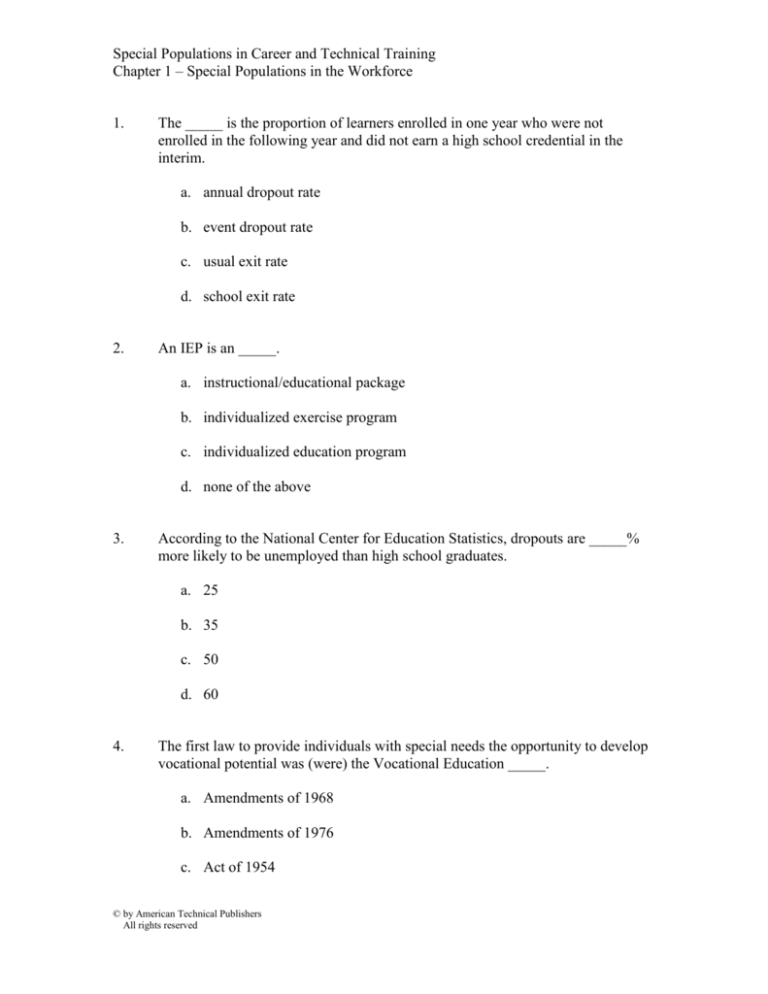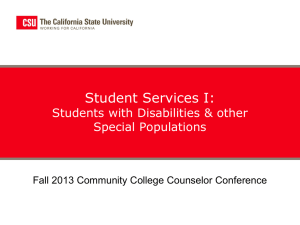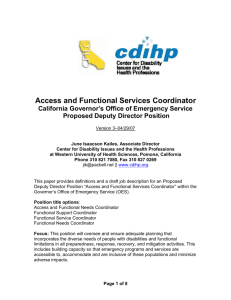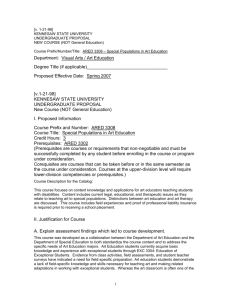
Special Populations in Career and Technical Training
Chapter 1 – Special Populations in the Workforce
1.
The _____ is the proportion of learners enrolled in one year who were not
enrolled in the following year and did not earn a high school credential in the
interim.
a. annual dropout rate
b. event dropout rate
c. usual exit rate
d. school exit rate
2.
An IEP is an _____.
a. instructional/educational package
b. individualized exercise program
c. individualized education program
d. none of the above
3.
According to the National Center for Education Statistics, dropouts are _____%
more likely to be unemployed than high school graduates.
a. 25
b. 35
c. 50
d. 60
4.
The first law to provide individuals with special needs the opportunity to develop
vocational potential was (were) the Vocational Education _____.
a. Amendments of 1968
b. Amendments of 1976
c. Act of 1954
© by American Technical Publishers
All rights reserved
Special Populations in Career and Technical Training
Chapter 1 – Special Populations in the Workforce
d. Act of 1963
5.
An effective school is characterized by _____.
a. minimal structure and high flexibility
b. high but effective expectations for learners
c. opportunities for learners to define clear goals
d. all of the above
6.
Enacted in 1996, the _____ dramatically changed the U.S. welfare system,
requiring work for time-limited assistance.
a. Job Training Partnership Act
b. Public Assistance Reform Act
c. Personal Responsibility and Work Opportunity Act
d. National Skill Standards Act
7.
The definition of transition services in the IDEA of 1997 remained the same as in
the IDEA of 1990, with the exception that _____.
a. the age to begin transition services was lowered to 15
b. the set of activities could include related services
c. the set of activities now excluded recreation
d. all of the above
8.
Sometimes referred to as “The Bill of Rights for the Handicapped,” the _____
prohibited discrimination in programs receiving federal funds.
a. Rehabilitation Act of 1973
b. Americans with Disabilities Act of 1990
c. Comprehensive Employment and Training Act of 1973
© by American Technical Publishers
All rights reserved
Special Populations in Career and Technical Training
Chapter 1 – Special Populations in the Workforce
d. Individuals with Disabilities Act of 1990
9.
The term special populations refers to _____.
a. individuals with disabilities
b. individuals preparing for nontraditional employment
c. displaced homemakers
d. all of the above
10.
The _____ expressed a national commitment to provide a free and appropriate
public education for every handicapped person between the ages of 3 and 21.
a. Individuals with Disabilities Education Act
b. Rehabilitation Act
c. Education for All Handicapped Children Act
d. Americans with Disabilities Act
© by American Technical Publishers
All rights reserved












